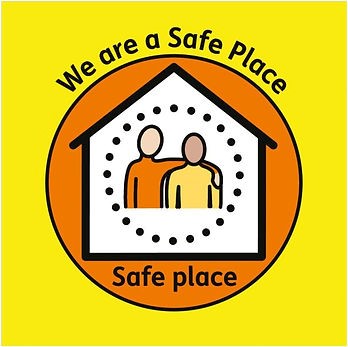
Keeping safe (SEND)
Information about keeping safe for children and young people with SEND.
Keeping our young people safe is something we all try to do as parents, and, as they get older, we want to give them the tools to keep themselves safe.
As with everything else, there is information across the internet about this subject, and we’ve tried to gather some of them here, aimed at both parents and young people, as a starting place for you to look.
Staying safe online
Having access to the internet is an important part of most people’s lives today, and this includes our SEND children and young people. While we don’t want to prevent our children from accessing the world through an electronic device, we also want them to be safe when they do.
Internet Matters was launched in 2014 by its founding partners, BT, Sky, TalkTalk and Virgin Media and is there to support parents and professionals with resources, tips and guidance for helping to keep children and young people safe online. They have a Supporting children and young people with SEND online section with advice for both parents and children and young people to help them have a safer time online.
Internet Matters video on Supporting children with SEND online
The NSPCC have worked with Ambitious about Autism to develop a range of tips, advice and practical examples for families to help keep their children and young people with SEND safe online. Online safety for children with SEND | NSPCC. The section has practical advice about setting up parental controls on a wide variety of electronic devices, including mobile phones and your home broadband and Wi-Fi. They also have activities created specially to help you talk to your children and young people about online safety, including topics like sharing personal details and online friendships.
Childnet is a UK-based charity launched in 1995 whose mission is to make the internet a safe place for children and young people. They have created a section on their website about Supporting young people with SEND online which has a range of advice and information including specific advice about the three C’s:
- content – what my child may see online
- contact – who my child may interact with online
- conduct – how my child can act online and how to handle cyber-bullying
The Council for Disabled Children have produced a short video for young people with SEND with information about how to stay safe and what to do if you’re a victim of cyber bullying.
Non-SEND specific online safety advice
Internet Matters also have a section about online grooming, this is not SEND specific, but you may find it contains useful tips and advice: Online grooming: what it is and how to protect your child.
CEOP are part of the National Crime Agency, and they help to keep children and young people safe from sexual abuse and grooming online. You can visit their website for advice about reporting any concerns you have: CEOP Safety Centre. They also have lots of useful advice and guides (not SEND specific) for parents and carers about supporting children and young people to get the most out of the internet: Parents and carers | CEOP Education (thinkuknow.co.uk). Their website also has areas for children and young people which are aimed at different age groups: 4-7s | CEOP Education (thinkuknow.co.uk); 8-10s | CEOP Education (thinkuknow.co.uk) and 11-18s | CEOP Education (thinkuknow.co.uk)
The Childline website has a variety of resources aimed at children and young people about staying safe online, staying safe while gaming, cyber bullying, bullying and grooming.
The NSPCC have produced a page about grooming, what it is, the signs, what parents can do, support they can access and advice for children and young people. It isn’t specific for children and young people with SEND, but it does contain a lot of useful information and guidance: What Parents Need to Know About Sexual Grooming | NSPCC
Keeping safe on the roads and travelling
The way we teach our young people road safety skills can be influenced by their needs and challenges. The Royal Society for the Prevention of Accidents (RoSPA) produced a useful guide for parents in 2021 about teaching road safety skills to children with additional needs. Along with general advice it also includes advice regarding children with specific additional needs such as ADHD, Autism, Dyslexia and Dyspraxia. You will also find information about different teaching aids, how to use them and where you can find them.
The National Autistic Society has a section on their website about Transport, and within that there is a Parents and carers guide to road safety. In addition, if your young person is older there is information about Travelling by train or bus along with a section on driving.
Finally, again for those older young people, the Northern Ireland Government have produced a Travel Safe – a guide for people with learning disabilities which you may find useful.
Safe Places
Our Way have developed a list of Safe Places, including shops, cafes and libraries who have pledged that if people are worried or scared they can go into these dedicated Safe Place. Safe Places can be seen in communities where they have this distinctive yellow sticker.

Useful links
- Internet Matters: Supporting children and young people with SEND online
- Online safety for children with SEND | NSPCC
- Childnet: Supporting young people with SEND online
- Council for disabled children: Top tips for young people to stay safe online - YouTube
Non-SEND specific online safety advice
- CEOP Safety Centre
- Parents and carers | CEOP Education (thinkuknow.co.uk)
- 4-7s | CEOP Education (thinkuknow.co.uk)
- 8-10s | CEOP Education (thinkuknow.co.uk)
- 11-18s | CEOP Education (thinkuknow.co.uk)
- Internet Matters: Online grooming: what it is and how to protect your child.
- Childline
- What Parents Need to Know About Sexual Grooming | NSPCC
Keeping safe on the roads and travelling
- RoSPA: Teaching road safety skills to children with additional needs
- National autistic society: Transport
- National autistic society: Parents and carers guide to road safety
- National autistic society: Travelling by train or bus
- National autistic society: Driving.
- Northern Ireland Gov: Travel Safe – a guide for people with learning disabilities
 Facebook
Facebook X
X Email
Email WhatsApp
WhatsApp Messenger
Messenger